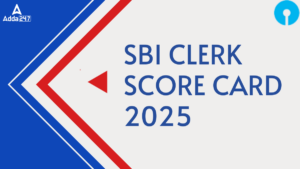Table of Contents
Watch Video Solution
Direction (1-5): In this question two statements followed by two conclusions numbered I and II have been given. You have to take the given statements to be true even if they seem to be at variance with common known facts and then decide which of the given conclusions logically follows from the given statements disregarding commonly known facts.
Q1. Statements:
Some heads are tails.
Some coins are head
Conclusions:
I. At least some tails are heads.
II. Some tails being coins is a possibility.
Q2. Statements:
All reviews are observations.
All comments are reviews.
Conclusions:
I. All observations are comments.
II. No observation is a comment.
Q3. Statements:
No mountain is a cliff.
Some cliffs are rocks.
Conclusions:
I. No mountain is a rock.
II. All rocks can never be mountains.
Q4. Statements:
All amounts are principles.
Some principles are balances.
Conclusions:
I. All balances being amounts is a
possibility.
II. Some balances are definitely not
principles
Q5. Statements:
All posts are mails.
No mail is a letter.
Conclusions:
I. No post is a letter.
II. At least some posts are letters.
Direction (6-10): Study the information carefully and answer the questions:
M, N, O, P, Q, R, S and T are eight friends sitting around a square table in such a way that four of them sit at four corners of the square while four sit in the middle of each of the four sides. Those who sit at the four corners face away from the centre while those who sit in the middle of the sides face the centre of the square table.
S, sits third to the right of O, who faces the centre. P sits third to the left of Q, who does not sit in the middle of the sides. Only one person sits between P and N. N is not an immediate neighbour of Q. M faces the centre. T is not an immediate neighbour of N.
Q6. Who sits exactly between P and N, when counted in clockwise direction from N?
Q7. What is the position of Q with respect to R?
Q8. Which of the following pairs represents the persons seated in the middle of the sides who face each other?
Q9. If T is made to face the opposite direction, who would sit on his immediate right?
Q10. Four of the following five are alike in a certain way and hence form a group. Which is the one that does not belong to that group?
Directions (11-15) : Study the following letter/number /symbol sequence and answer the questions following it.
6 7 # U V E ? 5 * L H 8 S A 9 T 4 $ F 3 % ∆ G D 8 M 2 X Z W
Q11. How many symbols are there in the series which are immediately preceded by a number and immediately followed by a letter?
Q12. If all the symbols are dropped from the series, which letter/number will be eleventh to the left of fifteenth letter/number from you left ?
Q13. If the position of the first and the sixteenth elements, the second and the seventeenth elements, and so on up to the eleventh and the twenty-sixth elements, are interchanged, which letter/number/ symbol will be seventh to the right of nineteenth letter/number/symbol from the right?
Now, 19th element from the left will be replaced by the fourth element (from the left) in the original series. Hence the required element is ‘U’
Q14. If the positions of the letters in the sequence are reoccupied by the letters themselves though after getting rearranged alphabetically from the left, which of the following will indicate the position of L in the new arrangement?
Q15. Which element will be seventh to the right of nineteenth element from the right?






 GA Capsule for SBI Clerk Mains 2025, Dow...
GA Capsule for SBI Clerk Mains 2025, Dow...
 The Hindu Review October 2022: Download ...
The Hindu Review October 2022: Download ...
 SBI Clerk Prelims Score Card 2025 Out, C...
SBI Clerk Prelims Score Card 2025 Out, C...







